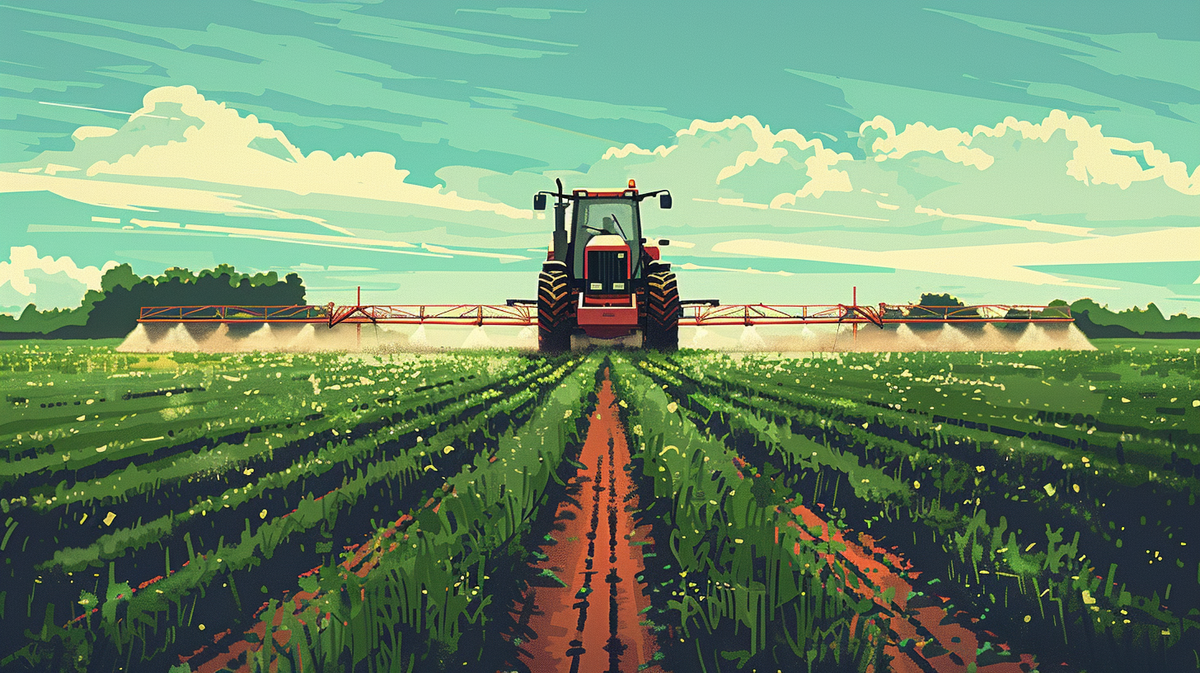Applying basalt rock dust boosts crop yields by up to 16% while soaking up C02.

New research conducted by scientists from the University of Sheffield’s Leverhulme Centre for Climate Change Mitigation suggests that applying crushed rock to farmers' fields could have significant benefits beyond reducing greenhouse gases. The study builds upon previous research from 2020[1] on enhanced rock weathering, a technique that involves breaking down rocks to increase their surface area for carbon sequestration.
Typically, rocks naturally absorb carbon dioxide as they break down, but this process is slow. Enhanced rock weathering accelerates this process by pulverizing rocks into dust and spreading it across agricultural fields. In the recent study,[2] conducted over four years at the University of Illinois Energy Farm, maize and soybeans were grown on treated and untreated plots. Results showed that treated plots yielded 12 to 16% more crops than untreated ones.
“We have shown with hard-won data, the carbon removal potential of enhanced weathering practices in the real world. It’s a big step forward in understanding the enormous potential of this technology to mitigate climate change while simultaneously improving yields and soil health.”
This increase in yield is attributed to several factors. Firstly, the basalt dust used in the treatment raises soil pH, enhancing nutrient uptake by plants. Additionally, as the basalt breaks down, it releases nutrients such as phosphorus, potassium, and calcium, further enriching the soil. Plants from treated plots also showed higher levels of micro- and macronutrients, making them more nutritious for both humans and livestock.
Moreover, the study confirms the carbon sequestration potential of crushed rock dust, with an estimated removal of about three to four tonnes of atmospheric carbon dioxide per hectare per year. Professor David Beerling, the lead scientist, emphasizes the significance of these findings in mitigating climate change while simultaneously improving soil health and crop yields. The previous 2020 study found that adoption of the process on a global scale could pull 2 billion tonnes (about 2.2 billion tons) of carbon dioxide from the atmosphere annually, roughly the same volume of C02 produced annually by global aviation and shipping.
Published in the journal Proceedings of the National Academy of Sciences, this research highlights the promising role of enhanced rock weathering in sustainable agriculture and climate change mitigation.
- ^Potential for large-scale CO2 removal via enhanced rock weathering with croplands, July 8th, 2020, Nature, 583, pages242–248 (2020) https://www.nature.com/articles/s41586-020-2448-9
- ^Enhanced weathering in the US Corn Belt delivers carbon removal with agronomic benefits, February 22, 2024, 121 (9) e2319436121, https://www.pnas.org/doi/full/10.1073/pnas.2319436121





